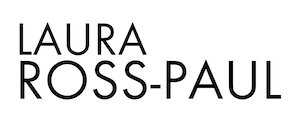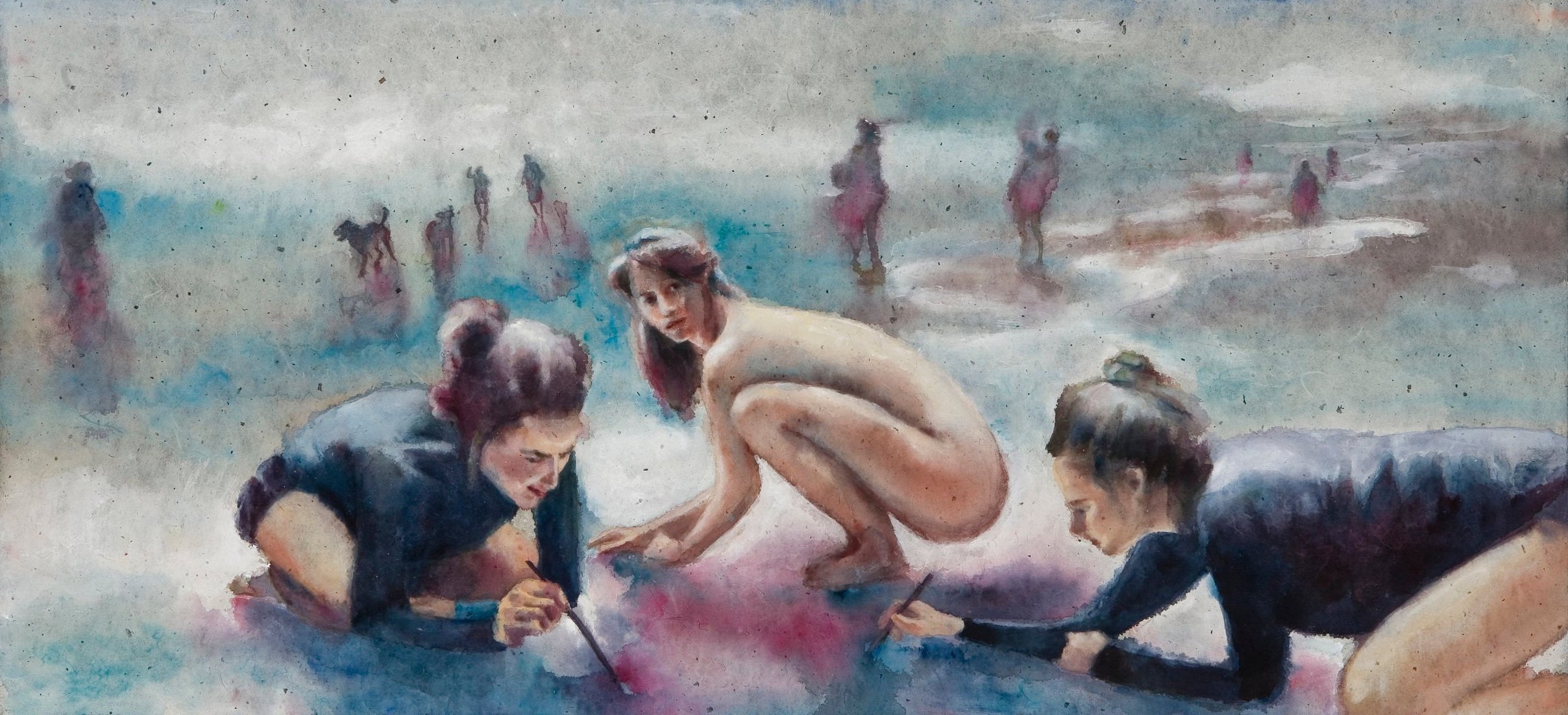PRESS
Laura Ross-Paul “Life for Breasts” Artist Talk
This video playlist contains all 5 parts of the artist talk: Intro, Pre-Breast Cancer, Going Through Treatment, Processing My Journey, and Q and A.
Willamette Week
2014
Urban Forest
Laura Ross-Paul is known for her evocative paintings of the human figure, but many of the paintings in Urban Forest have no people in them at all, only trees. Ah, but not “only” trees—these are roots and trunks and limbs rendered with an almost supernatural reverence. The looping, arcing contours recall previous series in which Ross-Paul depicted twin brothers linked by curved tree branches and auras of mysterious energy. This is an artist with a profound transcendentalist relationship to the natural world.
—Richard Speer
Visual Art Source
2010
Seasons
Figurative painter Laura Ross-Paul combines a free, neo-impressionist technique, an interest in Jungian symbols and archetypes, and a transcendentalist’s love of nature. These elements integrate seamlessly in “Seasons,” as her current exhibition is titled. With loose, but never sloppy brushstrokes in oil paints and encaustic medium, she lends to her figures a John Singer Sargent-like sense of aristocracy and idealization. Most often her subjects are young and they are adorned in contemporary garments. Sometimes she depicts them nude or semi-nude, allowing them to speak of timelessness rather than Zeitgeist. Ross-Paul is inspired by the Oregon coastline, yet her depictions of frolicking beachcombers and surfers, as in “Wave” and “Soup,” sometimes cross the line between the halcyon and the sentimental.
It is in her other major body of work — her forest fantasias — that the painter’s most affecting gifts come to the fore. Her pictorial and poetic sensibilities are activated by dappled light, tangled undergrowth, and the interplay between fir and deciduous trees. While her ocean idylls reveal all contours in flat, midday sunlight, her forest paintings withhold their potentialities. Embraced in verdant habitats, teenage models, who might in lesser hands come across as displaced mall rats, take on allusive overtones. The skateboarder becomes a forest sprite; the girl in fifth-period algebra transforms into a water nymph.
In “Early Spring” a shirtless boy wields a large branch that is curved like a scythe, its contours alternately following and bisecting the lines of the blossoming tree behind him. He is, we sense, more than a boy holding a stick. Regarding the viewer implacably, his expression too cagey to be serene but too beatific to be sinister, he challenges us to divine his identity, his narrative, and the implications of his prop.
Another of this veteran painter’s talents is the invention with which she communicates a mystical reverence for nature through her handling of background atmospherics. The fiery aurora borealis in “Celebration,” the shimmerings of water and sky in “Fall River,” the swirling dance of snow flurries in “Scarf” and “A Light Dusting,” and the opulent textures and pastel hues of the flower petals in “Early Spring” all create dizzying backdrops that, rather than distracting from the foregrounds, impart a pulsating, magical quality, heightening compositional and thematic drama. She has written that she titled the show “Seasons” because she wanted to evoke those imprecise moments when something changes in the air and one senses that the season that has been is giving way to the season that is to be. It is a phenomenon well-suited to the generous sfumato of her technique. A longtime associate professor of painting at Portland State University and later Lewis & Clark College, Ross-Paul recently retired from teaching, renovated her studio, and plunged into painting full-time. The current work is her most vital in years, invigorated by dueling impulses to portray dark mysteries and illuminate metaphysical truths.
—Richard Speer
art ltd.
2009
Artist Profile
Laura Ross-Paul paints: “the wonderment of our interconnection with nature and with each other, the web of life.” Based in Portland, Oregon, she spends much time in a raw family cabin and her adjacent yurt studio in a beach town close to an old-growth forest. Amid ancient trees and sea, Ross-Paul is continually amazed how nature and human life share patterns, each fitting in and supporting the other. Her art depicts these “patterns and moods in natural settings that echo patterns and moods found in human life.” Thus, her thoughtful art reveals how nature and humans continually play off each other, both compositionally and psychologically. The mood of the sky or the bend of a cloud mimics the bend of a human back as nature takes on the posture of the other. “A splayed hand echoes a leaf; a branch goes down a stream, intent on passing some rocks to continue its journey.” To achieve synchronicity, Ross-Paul spends a great deal of time capturing natural details and working on precise body language and facial expressions. She “sweats bullets” getting the correct body language, the exact emotion and facial expression. In one painting, Archway (2009), two boys hold ends of a flexible stick that forms a loop. In the background, a tree made out of two interconnecting trees symbolically represents the actions and relationships of the two protagonists in the foreground. The stick represents their being two within a single relationship. Working with duality in nature, humans, human pairs, and twins, Ross-Paul finds that dissimilar aspects of self forever try to become one with the whole, struggling for change and balance, but always through “wonderment.”
Through much trial and error, working with the Portland-based Gamblin Artists Colors, Ross-Paul and Martha Gamblin arrived at a technique that is unique to Ross-Paul and gives her oil paintings the vibrant blend and luminosity of her watercolors on rice paper. While the oil paint is still wet, laying flat on the floor, she pours a mixture of Galkyd resin and cold wax. The wax chemically melts into the resin. To assist the process, Ross-Paul rolls the canvas back and forth, sometimes even pounds it. The resin and wax pick up the wet paint and carry the pigment in a suspended state in a way that a brush cannot. When dry, the painting appears incredibly ephemeral. At this point, the artist hangs it again and “adds more painterly, muscular marks, which counter the ephemeral,” giving her art its distinct balance of energy, delicateness, floating, melting, and radiating light.
An aspect of Ross-Paul’s life that deeply affects her work was “being the first woman in America to volunteer and receive a cryolumpectomy,” successfully overcoming breast cancer at Detroit’s Karmanos Cancer Center. Now cleared for many years, it has shifted her focus to a cosmic, shamanistic view of life. Her 2003 painting, Juggle #3, on view at her recent solo show at JoAnne Artman in Laguna Beach, depicts a woman running with zest and vigor, as she balances three balls on top of each other. Their colors are orange-red, blue and white. The blue and the orange-red could represent the healthy and unhealthy breast (they are breast size) while the white could represent the “ice ball” that was used for the surgery. Interestingly, this was the last painting Ross-Paul created before finding out that she had breast cancer; and it was an “ice ball” that eventually saved her breast. Since that life-changing incident, Ross-Paul’s work has become a reverie of an altered state of consciousness. Her enigmatic dream-like imagery erodes the mundane as nature and human energy endow Ross-Paul’s art with the unexpected and magically superb.
—Roberta Carasso




